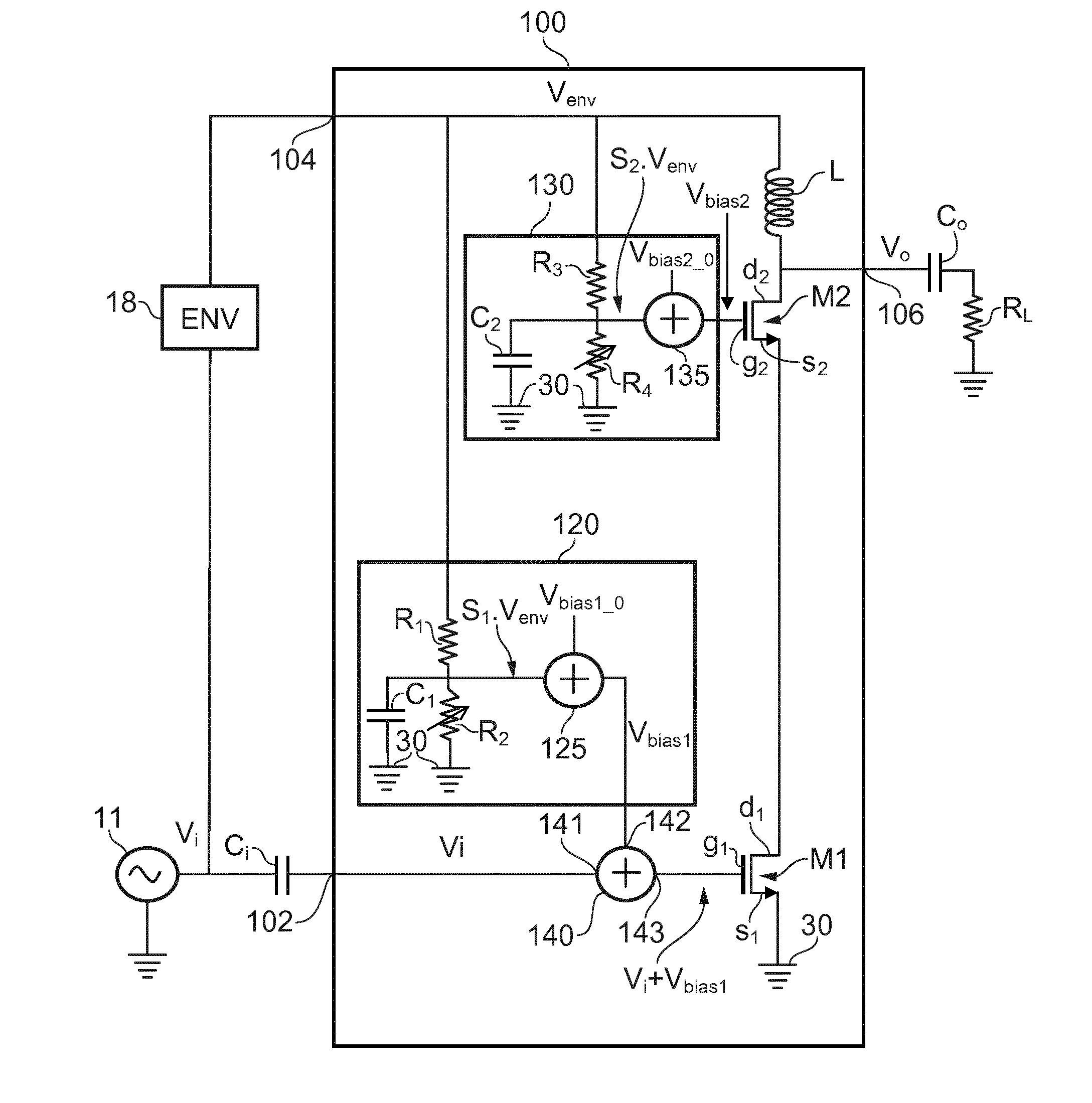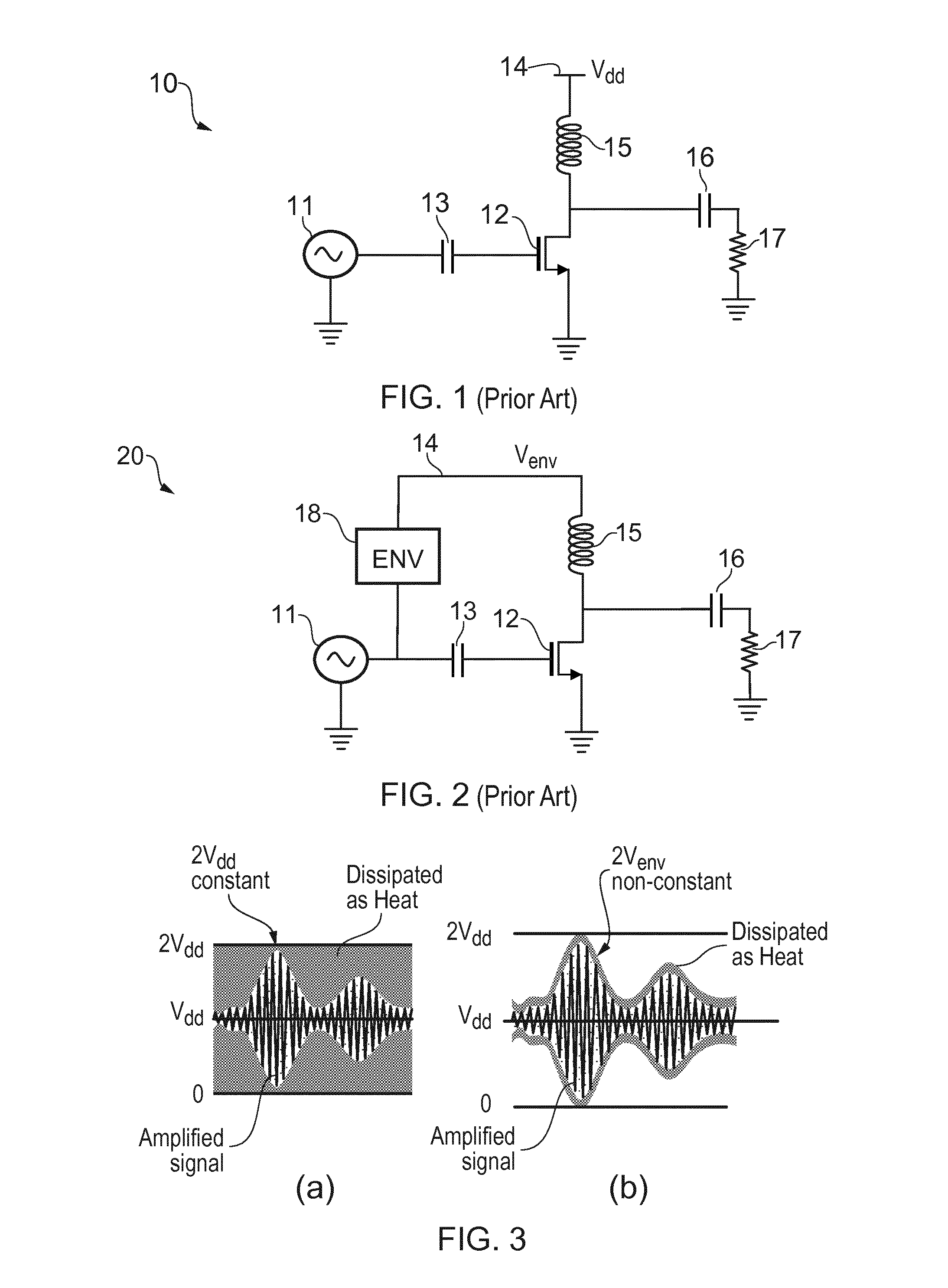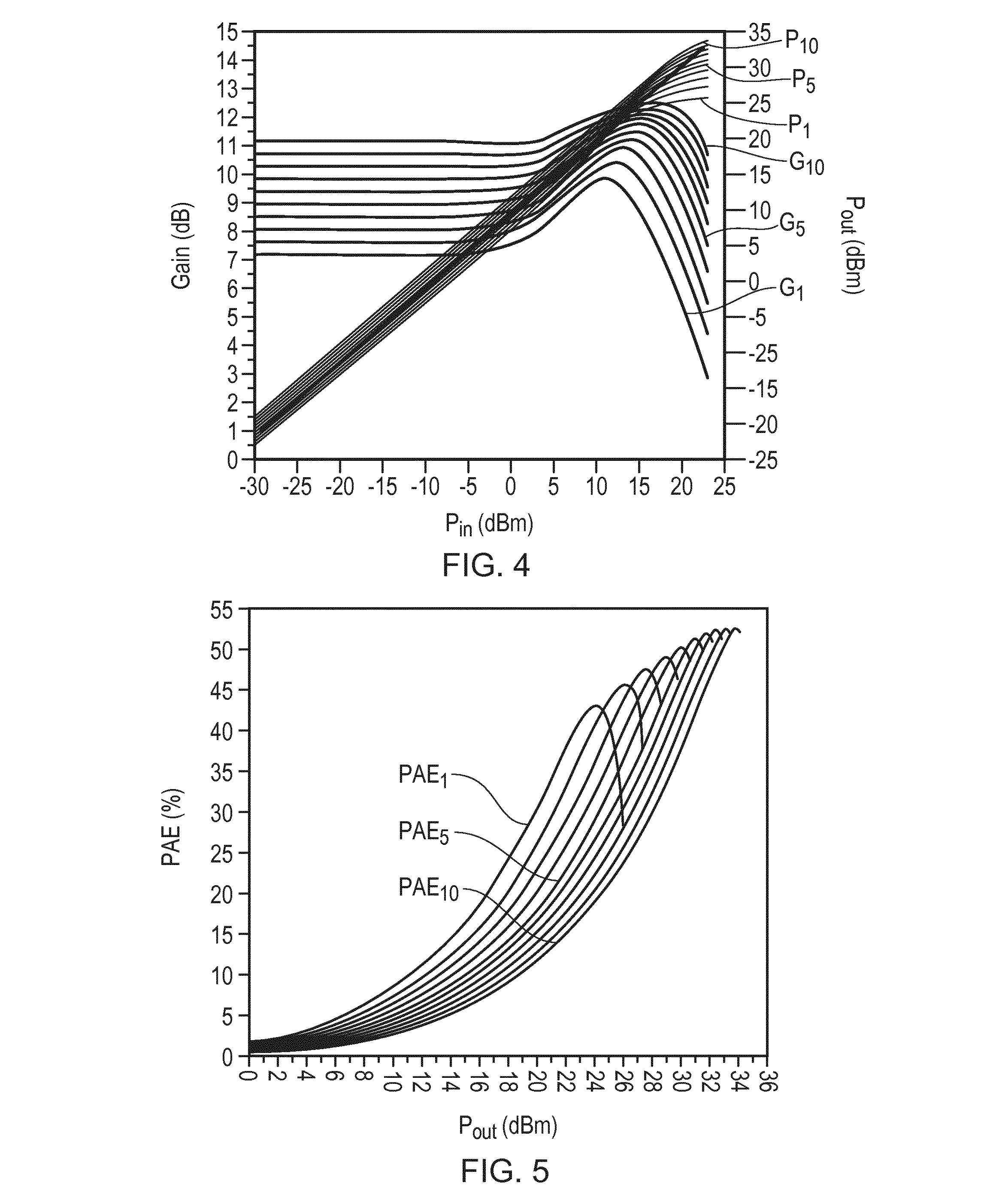Amplifier Topology for Envelope Tracking
- Summary
- Abstract
- Description
- Claims
- Application Information
AI Technical Summary
Benefits of technology
Problems solved by technology
Method used
Image
Examples
first embodiment
[0039]FIG. 6 is an amplifier in accordance with the present disclosure;
[0040]FIG. 7 illustrates load lines for different values of the envelope signal;
[0041]FIG. 8 is a graph of gain and output power as a function of input power for an amplifier with tracking bias voltages in accordance with the present disclosure;
[0042]FIG. 9 is a graph of gain and output power as a function of input power without tracking bias voltages;
[0043]FIG. 10 is a graph of current as a function of output power;
[0044]FIG. 11 is a Smith chart illustrating input impedance;
[0045]FIG. 12 is a graph of Rollet stability factor;
[0046]FIG. 13 is a graph of small signal gain as a function of frequency;
[0047]FIG. 14 is a flow chart of a method of amplification;
[0048]FIG. 15 is a flow chart of a method of calibrating an amplifier;
second embodiment
[0049]FIG. 16 is an amplifier in accordance with the present disclosure; and
[0050]FIG. 17 is a block schematic diagram of an electronic apparatus comprising an amplifier.
PUM
 Login to View More
Login to View More Abstract
Description
Claims
Application Information
 Login to View More
Login to View More - R&D
- Intellectual Property
- Life Sciences
- Materials
- Tech Scout
- Unparalleled Data Quality
- Higher Quality Content
- 60% Fewer Hallucinations
Browse by: Latest US Patents, China's latest patents, Technical Efficacy Thesaurus, Application Domain, Technology Topic, Popular Technical Reports.
© 2025 PatSnap. All rights reserved.Legal|Privacy policy|Modern Slavery Act Transparency Statement|Sitemap|About US| Contact US: help@patsnap.com



